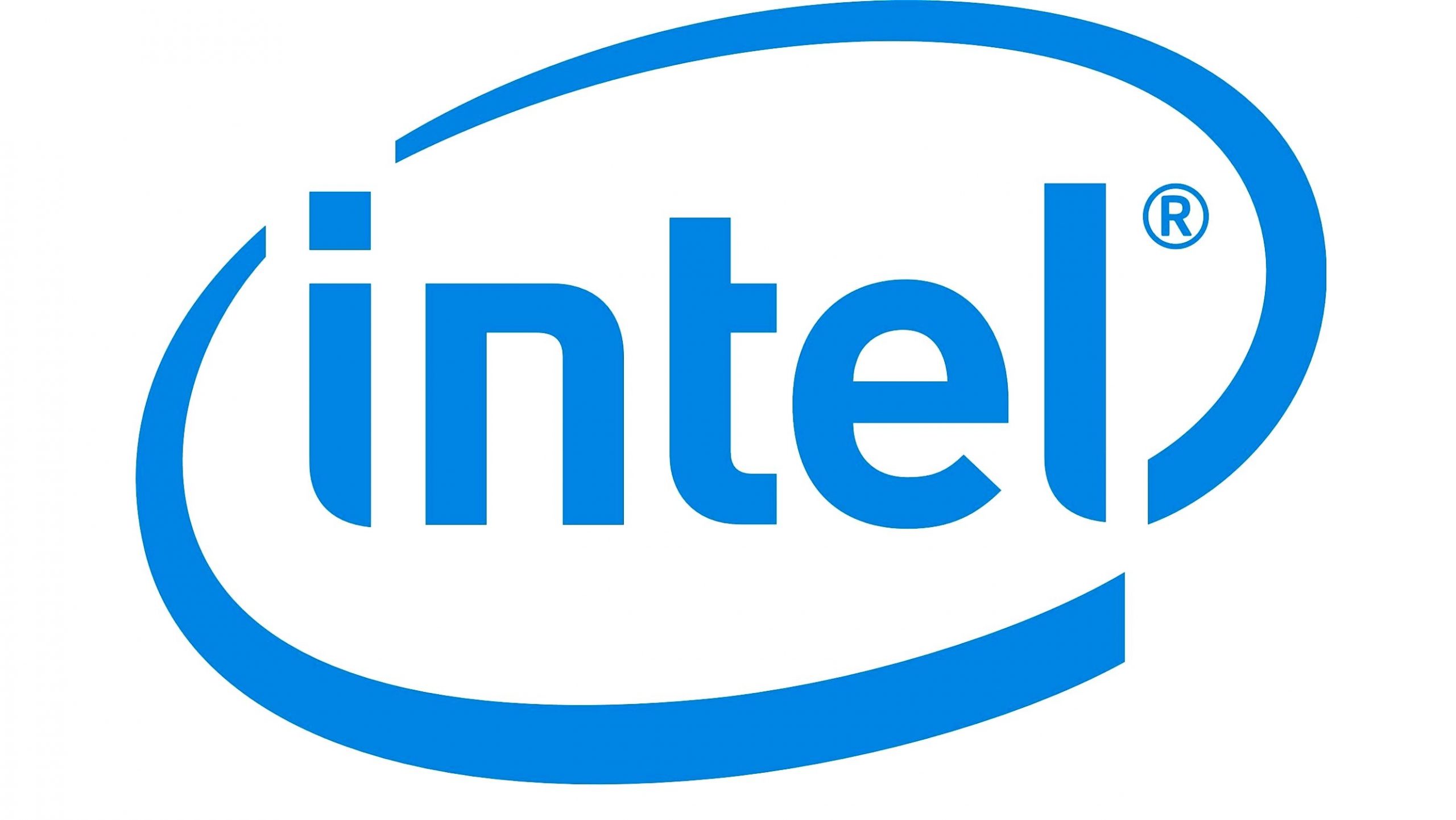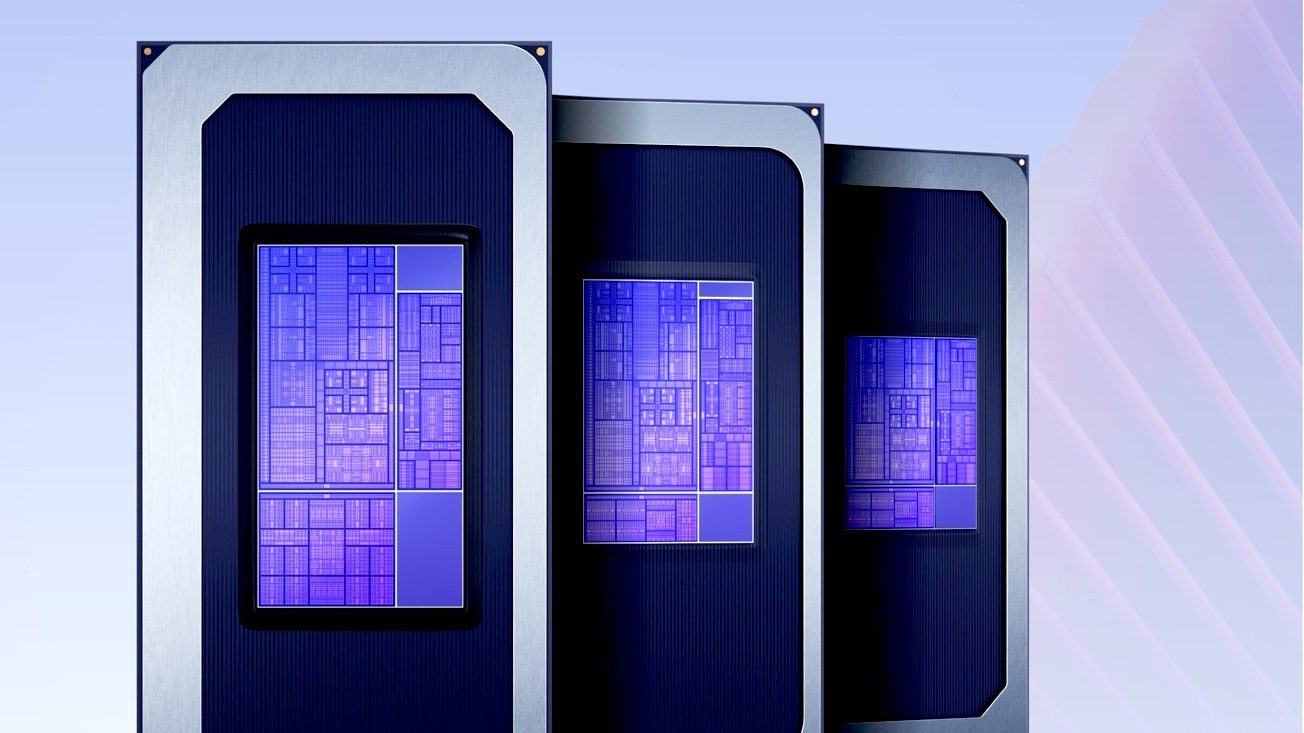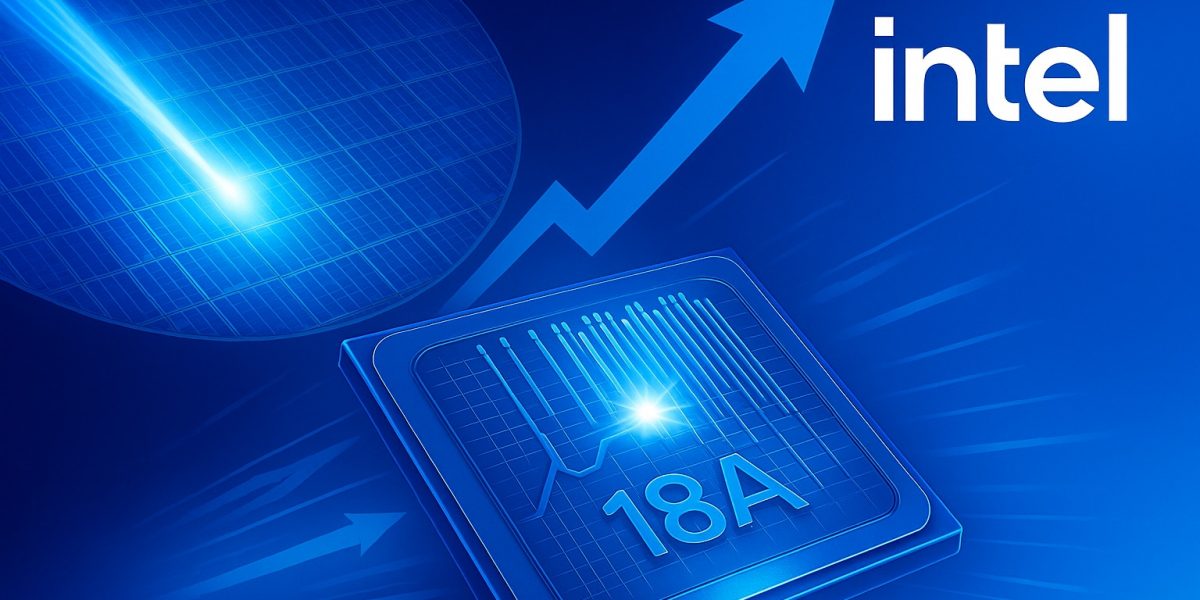Intel made a significant play to reclaim market leadership yesterday with the unveiling of Panther Lake processors, marking what could be a pivotal moment for the struggling chipmaker. The Core Ultra Series 3 chips, built entirely on Intel’s cutting-edge 18A manufacturing process, promise performance jumps that haven’t been seen in recent generations—assuming the company can deliver on these ambitious claims.
The announcement came during Intel’s technology showcase in Arizona, where executives detailed specifications showing up to 50% higher CPU performance and over 50% improved graphics capabilities compared to previous-generation chips. These aren’t incremental updates—Intel is positioning Panther Lake as the first consumer products fully manufactured using what they characterize as “the most advanced semiconductor manufacturing process ever developed and produced in the United States.”

Revolutionary Manufacturing Process Drives Performance Claims
The dramatic performance improvements stem from Intel’s 18A process, a 2-nanometer class technology incorporating two groundbreaking innovations that represent fundamental shifts in chip design rather than simple refinements of existing approaches.
RibbonFET Transistor Architecture
RibbonFET marks Intel’s first new transistor architecture since FinFET debuted in 2011. The gate-all-around design completely wraps the channel, enabling higher transistor density and improved power efficiency compared to conventional FinFET structures. This isn’t just marketing terminology—the architectural change addresses physical limitations that have constrained scaling in recent process nodes.
PowerVia Backside Power Delivery
PowerVia separates power and signal routing by moving power delivery to the chip’s backside. Traditional designs route both through the same metal layers, creating congestion that limits performance and increases voltage drop. By segregating these functions, Intel eliminates interconnect bottlenecks and reduces IR drop—the voltage degradation that occurs when power travels through resistance.
The 18A node delivers 15% higher frequencies at equivalent power compared to Intel’s previous processes, while achieving 1.3x density improvements. According to Intel’s data, Panther Lake can provide 50% more performance at similar power consumption versus Lunar Lake chips, or reduce power draw by 30% during multi-threaded workloads compared to Arrow Lake-H processors.
Intel’s Fab 52 facility in Arizona is “fully operational and ready for high-volume manufacturing with Intel 18A technology this year,” enabling domestic production of these advanced chips. Initial Panther Lake processors should ship before 2025 concludes, with broad availability beginning January 2026.
Modular Architecture Targets Different Market Segments
Panther Lake employs a tile-based system-on-chip architecture with three interchangeable configurations addressing distinct market requirements. This modular approach lets Intel optimize for different use cases without designing entirely separate chips from scratch.
The base 8-core model combines four performance cores (Cougar Cove) with four efficiency cores (Darkmont). Higher-performance 16-core variants add eight additional efficiency cores for enhanced multitasking capabilities. This hybrid architecture follows the pattern Intel established with Alder Lake, though the new core designs should deliver substantially better performance than previous generations.
Graphics Capabilities Receive Major Upgrade
The flagship configuration incorporates Intel’s new Xe3 integrated graphics with 12 GPU cores and 12 ray tracing units. Intel claims 1.5x gaming performance improvements, backing this with demonstration runs showing Painkiller hitting 220 FPS and Dying Light 2 reaching 140 FPS while consuming just 45 watts.
These gaming benchmarks represent carefully selected scenarios that show the hardware in optimal conditions, so real-world performance across diverse titles will likely vary. However, the demonstrated frame rates at that power envelope suggest genuine progress in integrated graphics capabilities.
AI Processing Gets Fifth-Generation NPU
Panther Lake includes Intel’s fifth-generation Neural Processing Unit delivering up to 50 TOPS for AI workloads. Combined with CPU and GPU AI capabilities, total platform AI performance reaches 180 TOPS. This matters increasingly as applications integrate AI features for everything from video editing to productivity tools.
Memory support extends to 96GB LPDDR5x-9600 and 128GB DDR5-7200, with LPCAMM modular memory compatibility. These specifications position Panther Lake for professional workloads requiring substantial memory bandwidth and capacity.
Bridging Previous Generation Trade-offs
Intel designed Panther Lake to reconcile the competing priorities that forced trade-offs in recent chip families. Lunar Lake optimized for efficiency, delivering impressive battery life in thin laptops but sacrificing some performance. Arrow Lake prioritized raw power, making it suitable for gaming systems but less ideal for ultraportables.
Panther Lake attempts to eliminate this dichotomy, offering both strong performance and reasonable power consumption across the product range. Whether Intel successfully achieved this balance won’t be clear until independent reviewers test retail hardware under diverse workloads.
Critical Questions Remaining Before Launch
Several aspects warrant scrutiny as Panther Lake approaches commercial availability:
Real-World Performance Validation
Intel’s performance claims come from internal testing under controlled conditions. Independent verification across representative applications will reveal whether the 50% improvements materialize consistently or only in specific optimized scenarios. Historical precedent suggests actual gains often fall below manufacturer projections once diverse software and use cases enter the picture.
18A Manufacturing Yields and Reliability
Revolutionary manufacturing processes typically face yield challenges during initial production ramps. Intel’s ability to produce Panther Lake chips at commercially viable yields directly impacts pricing, availability, and the company’s financial recovery. Any significant yield issues could delay launches or force Intel to charge premium prices that reduce market competitiveness.
Thermal Management in Thin Form Factors
While 45-watt gaming performance looks impressive, laptop manufacturers must design cooling systems capable of sustaining these power levels without excessive noise or thermal throttling. The gap between peak performance and sustained performance under thermal constraints often determines real-world user experience more than benchmark specifications.
Competitive Positioning Against AMD and Apple
By January 2026 launch, AMD will have refreshed its mobile processor lineup and Apple might have advanced its M-series chips. Panther Lake’s competitive standing depends not just on its absolute performance but on how it compares against whatever competitors offer at that time. Intel’s historical pattern of delayed launches has sometimes meant impressive chips arrived facing newer competition than initially anticipated.
Pricing Strategy and Market Adoption
Intel hasn’t disclosed Panther Lake pricing, which will heavily influence market reception. Premium pricing might be justified by performance but could limit adoption to high-end segments. Aggressive pricing could drive volume but pressure Intel’s margins during a period when the company desperately needs financial improvement.

What This Means for Laptop Buyers
For consumers evaluating laptop purchases, Panther Lake’s arrival creates timing considerations. Buying current-generation systems might mean missing substantial performance improvements, while waiting carries the risk that new chips face supply constraints or unexpected issues.
The processor’s modular architecture should enable diverse laptop designs spanning ultraportables, mainstream systems, and gaming machines. This breadth means Panther Lake could influence products across most price points rather than remaining confined to premium segments.
Organizations planning laptop refreshes might want detailed Panther Lake performance data before committing to large volume purchases. The combination of performance improvements and AI capabilities could justify waiting for new hardware rather than deploying soon-to-be superseded systems.
Intel desperately needs Panther Lake to succeed. The company has lost significant market share to AMD in recent years while facing manufacturing challenges that undermined its historical process leadership. The 18A node represents Intel’s attempt to leapfrog competitors technologically while demonstrating that U.S.-based advanced semiconductor manufacturing remains viable.
Whether Panther Lake delivers on its ambitious promises will become clear once chips reach reviewers’ hands and retail systems arrive. Until then, Intel’s claims represent goals rather than verified achievements—impressive if realized, but contingent on execution that the company hasn’t always managed flawlessly in recent years.




Post a comment